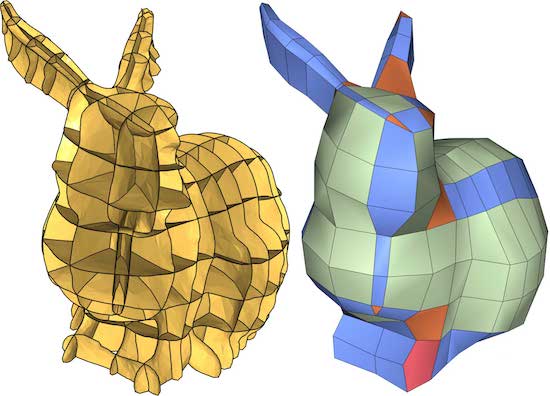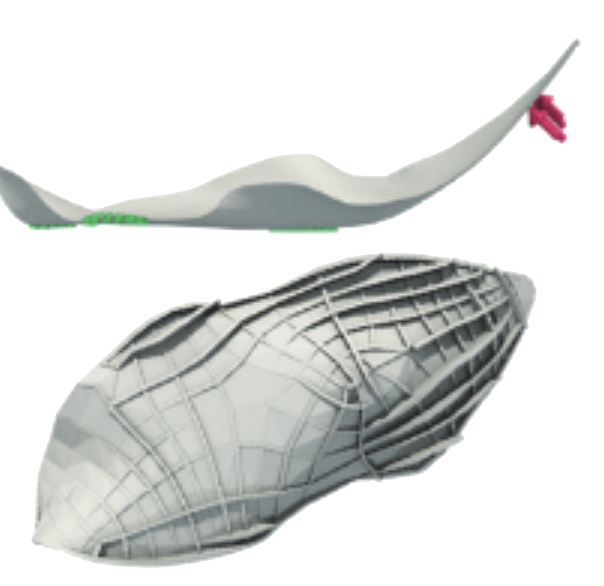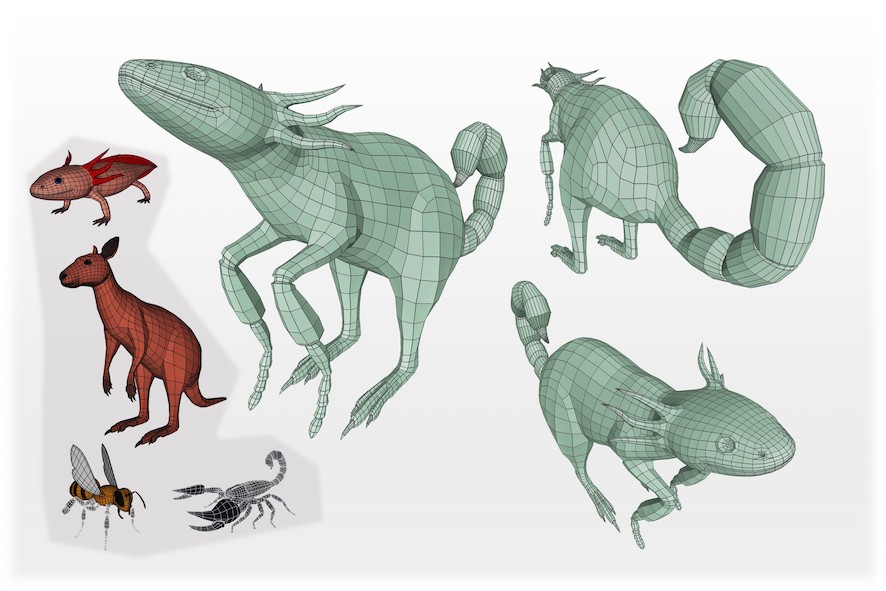 |
My research focuses on concepts and
practical algorithms for the creation and
manipulation of digital shape representation. I
am especially interested in how geometry
processing intersects with artistic modelling
and digital fabrication. My primary goal is to
push the boundaries of current industrial
production pipelines by exploiting the
theoretical foundations in geometry processing.
This includes mesh parametrization, surface
abstraction and global optimization applied to
the entertainment industry, digital fabrication
and architectural geometry.
|
Short BIO
September 2017 Senior Lecturer at UTS SydneyJanuary 2013 Permanent researcher at Visual Computing Lab at cnr of Pisa in Italy.
May 2010 Back to Italy, post-doc at Visual Computing Lab at cnr of Pisa in Italy.
November 2009 – April 2010 Visiting Academic at Media Research Laboratory, New York University New York City,
NY,USA under the supervision of prof. Denis Zorin and prof. Olga Sorkine
May 2009 Got the PHD in Computer Science at the university of Genova under the supervision of Fabio Ganovelli, Paolo Cignoni and Enrico Puppo.
September 2006 – February 2007 Visiting PHD at Computer Graphics Lab, ETH Zurich, Switzerland, under the supervision of prof. Miguel A. Otaduy and prof. Markus Gross
May 2004 Got my Master Degree, Computer Science, Dipartimento di informatica, University of Pisa. And joined the Visual Computing Lab at cnr of Pisa in Italy.
Looking for a
PhD?
here's some possible
ideas we can collabourateRecent Major Projects
| We propose an optimization
algorithm for the design of post-tensioned
architectural shell structures, composed of
triangular glass panels, in which glass has a
load-bearing function. |
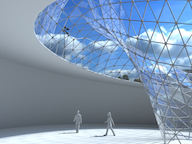 |
| FlexMaps can be fabricated from an almost rigid material, such as wood or plastic, and are made exible in a controlled way by using computationally designed spiraling microstructures. | 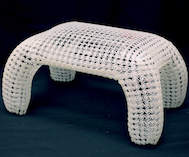 |
| Metamolds automatically
define the cuts that are needed to extract the
cast object from the silicone mold. The shape
of metamolds is designed through a novel
segmentation technique, which takes into
account both geometric and topological
constraints involved in the process of mold
casting. |
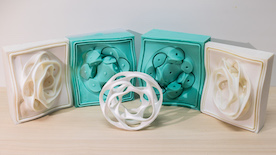 |
| Digital fabrication devices are powerful tools for creating tangible reproductions of 3D digital models. Most available printing technologies aim at producing an accurate copy of a tridimensional shape. However, fabrication technologies can also be used to create a stylistic representation of a digital shape. We refer to this class of methods as "stylized fabrication methods." | 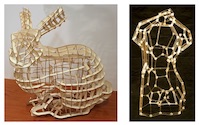 |
| We propose a novel framework for the computational design of tensegrity structures, which are constructions made of struts and cables, held rigid by continuous tension between the elements. Tensegrities are known to be difficult to design. Existing design methods are often restricted to using symmetric or templated configurations, limiting the design space to simple constructions. | 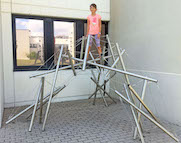 |
| We present FlexMolds, a
novel computational approach to automatically
design flexible, reusable molds that, once 3D
printed, allow us to physically fabricate, by
means of liquid casting, multiple copies of
complex shapes with rich surface details and
complex topology. The approach to design such
flexible molds is based on a greedy bottom-up
search of possible cuts over an object,
evaluating for each possible cut the
feasibility of the resulting mold. |
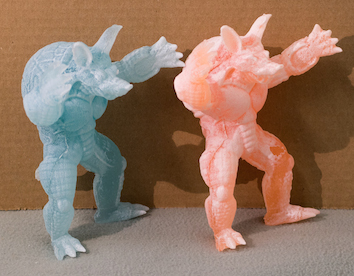 |
| Given a cross field over a
triangulated surface we present a practical
and robust method to compute a field aligned
coarse quad layout over the surface. The
method works directly on a triangle mesh
without requiring any parametrization and it
is based on a new technique for tracing
field-coherent geodesic paths directly on a
triangle mesh. |
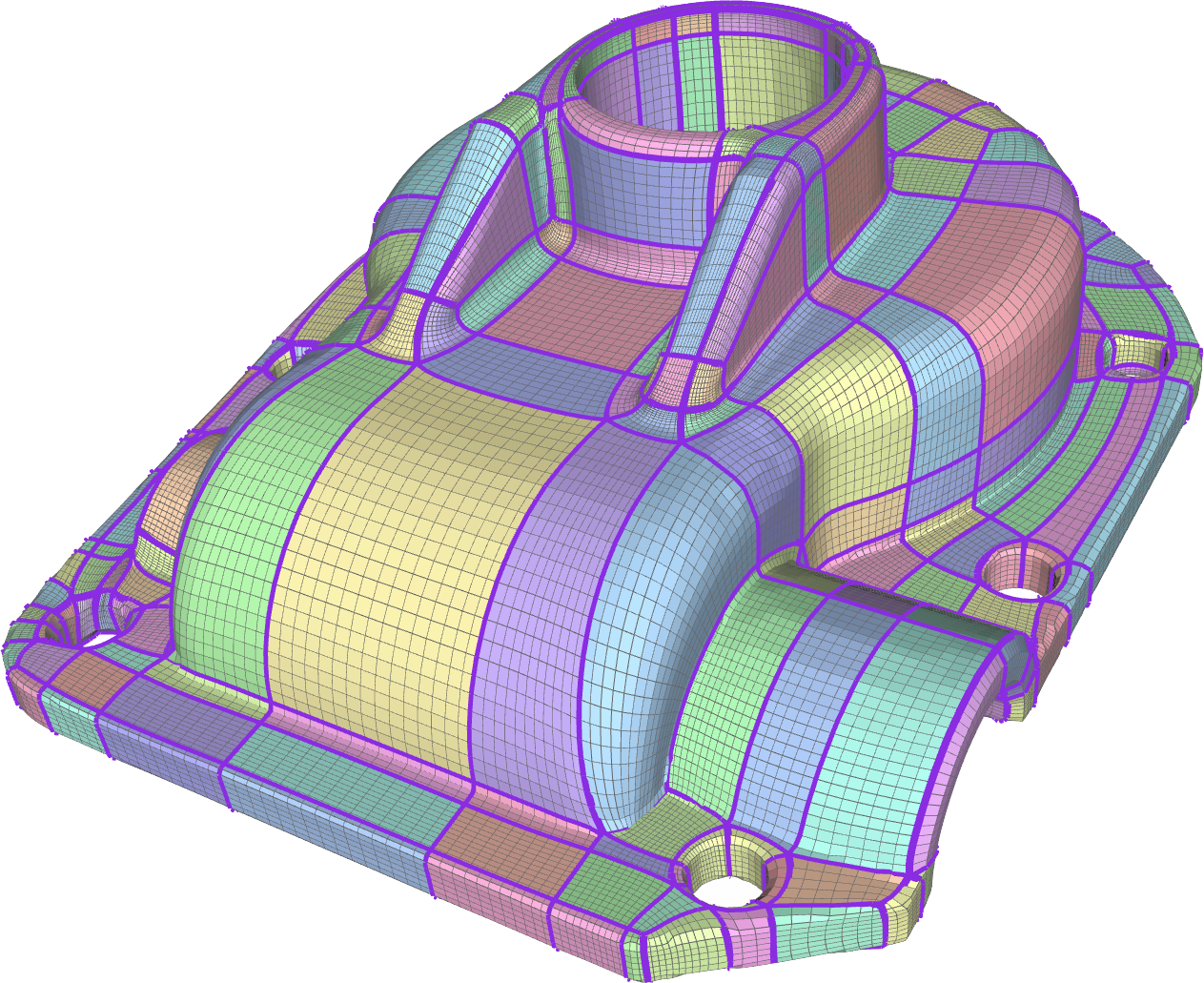 |
| We introduce elastic
textures: a set of parametric, tileable,
printable, cubic patterns achieving a broad
range of elastic material properties: the
softest pattern is over a thousand times
softer than the stiffest, and the Poisson
ratios range from below zero to nearly 0.5.
Using a combinatorial search over topologies
followed by shape optimization, we explore a
wide space of wireframe-like, symmetric 3D
patterns to obtain a small family. |
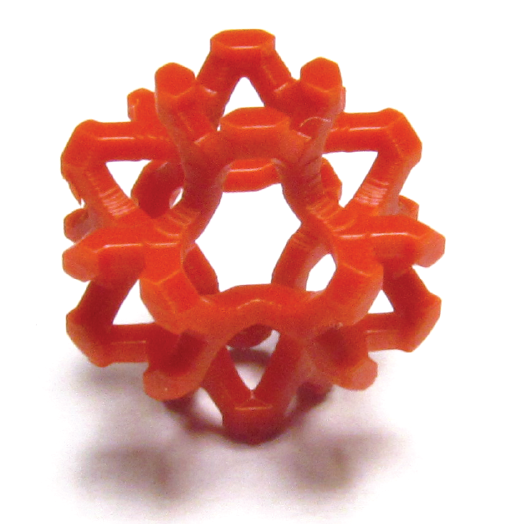 |
| We propose an interactive
quadrangulation method based on a large
collection of patterns that are learned from
models manually designed by artists. The
patterns are distilled into compact
quadrangulation rules and stored in a
database. At run-time, the user draws strokes
to define patches and desired edge flows, and
the system queries the database to extract
fitting patterns to tessellate the sketches'
interiors... |
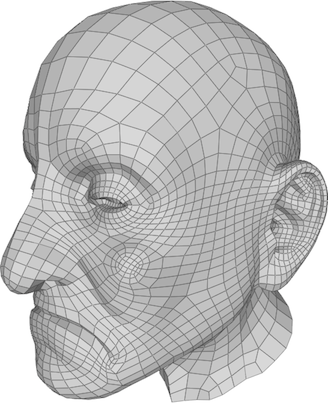 |
| We introduce a framework
for the generation of polygonal grid-shell
architectural structures, whose topology is
designed in order to excel in static
performances.... |
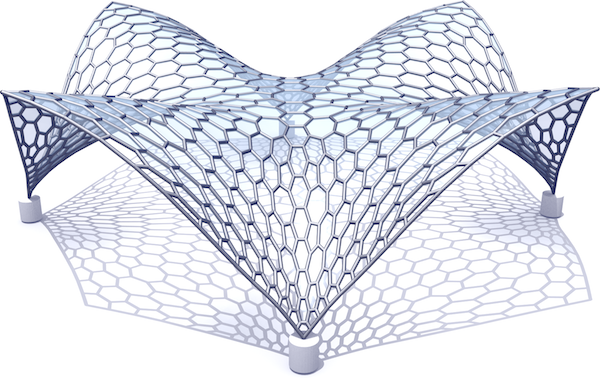 |
| We present a robust method for computing locally bijective global parametrizations aligned with a given cross-field. The singularities of the parametrization in general agree with singularities of the field, except in a small number of cases when several additional cones need to be added in a controlled way. |  |
| Mesh joinery is an innovative method to produce illustrative shape approxi- mations suitable for fabrication. Mesh joinery is capable of producing com- plex fabricable structures in an efficient and visually pleasing manner. We represent an input geometry as a set of planar pieces arranged to compose a rigid structure, by exploiting an efficient slit mechanism. Since slices are planar, to fabricate them a standard 2D cutting system is enough. We automatically arrange slices according to a smooth cross field defined over the surface. Cross fields allow representing global features that char- acterize the appearance of the shape. Slice placement conforms to specific manufacturing constraints. | 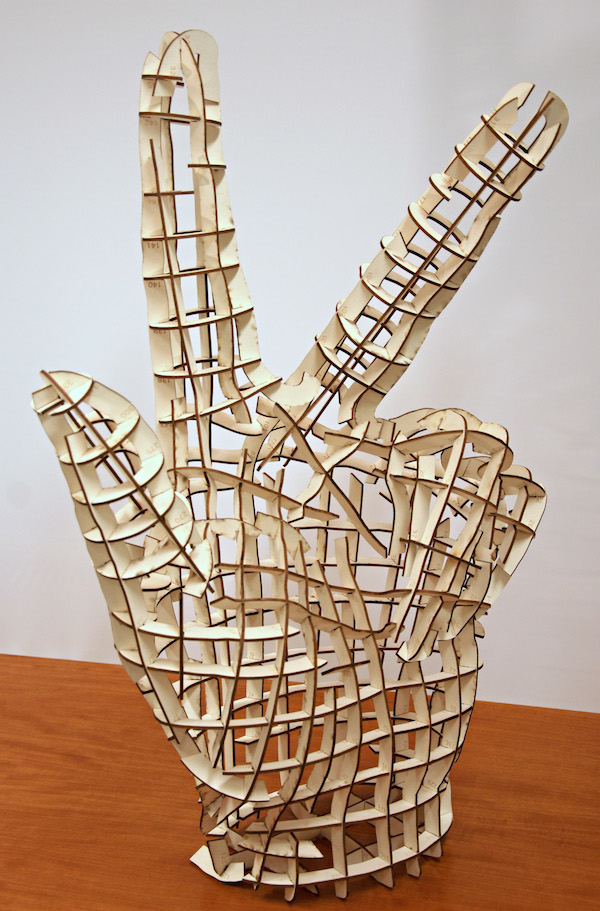 |
